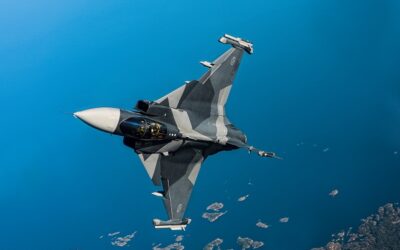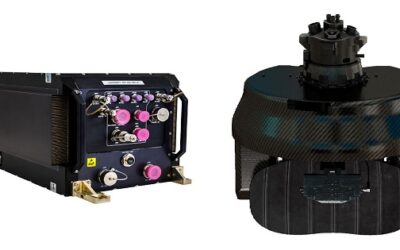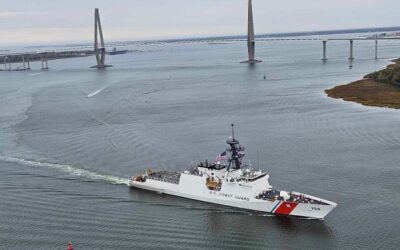Fully Autonomous With Common Interface
The Bell scalable family of autonomous, unmanned logistics vehicles, labeled Autonomous Pod Transports (APT), is rapidly evolving. John Wittmaak, Programme Manager for small unmanned aerial systems (UAS) at the company, noted there are currently two models in this product line – a 20lb payload aircraft (APT 20) and a 70lb model (APT 70). While other companies in this market space are developing unmanned logistics drones, Mr Wittmaak pointed out several differentiators for this family. “They require the same type to training, same interface and same maintenance interval – they are very, very common. You can train on the -20 and fly the -70.” And beyond that, he noted the APTs are fully autonomous aircraft “with no ‘stick and rudder’. You give it a destination, basic flight parameters and hit the ‘go’ button and it goes to its destination.” On 27 August, Bell announced the first successful autonomous flight of APT 70.
While the APT has heretofore been an internal Bell research and development effort, the family of vehicles is being readied for live demonstrations for prospective military customers. In one instance, Bell is scheduled to showcase the APT 20 and -70 at Army Expeditionary Warfighter Experiment 2020 at Fort Benning, GA. “We’ve also been talking to several foreign military services. They have the same common interest in resupplying their soldiers without the need and risks of a convoy. There is definite interest world-wide with our allies,” Wittmaak added.
The APT programme is being designed to complement concurrent unmanned ground vehicle (UGV) logistics efforts in development in the US and elsewhere. Wittmaak noted the decision to transport materiel, by UAS or UGV, comes down to the payloads you are trying to transport – for starters. “If you are transporting several thousand pounds with no time sensitivity, that is for ground vehicles. If you are time sensitive or have difficult access, with rivers, ridges and other features, the airborne asset is critical.”
With respect to scalability, Bell is currently examining the feasibility of a 4-500lb payload APT and another version with an 800lb payload. While the payloads will increase from current ratings, the new aircraft will stay true to their family, or common fleet, attributes. “This will include training, interface, maintenance intervals and others. We have spent a lot of time to make APT simple, modular and reliable.”
Yamato Holdings of Japan is collaborating with Bell on its APTs.
Another major UAS effort finds Bell continuing to design its V-247 VIGILANT unmanned tiltrotor as a solution for the emerging USMC ship-based multi-mission aircraft requirement, known in Pentagon-speak as the Marine Air Ground Task Force (MAGTF) Unmanned Aircraft System (UAS) Expeditionary (MUX) aircraft requirement. Of interest, the MUX programme is proceeding deliberately, but has yet to become a significant DoD acquisition effort. As one data point, in fiscal year 2020 the USMC requested $21.6 million to mature the concept and conduct experimentation with the plan to operationally field the aircraft in the mid-2020s.
In another conference floor interview with MON, Todd Worden, Bell’s Manager for Advanced UAS Systems, noted his team’s current focus has been responding to USMC’s prize challenges in four areas: ISR, EW, airborne early warning and data relay, provided to competing MUX industry teams. “These are due to the service next week [week of 23 Sept.] or so,” Mr Worden said.
With respect to maturing its V-247 technology baseline for the MUX competition, he noted one recent effort, involving a VIGILANT mock-up, was to introduce a new distributed aperture system on the side of the aircraft. “This is a new radar in the nosecone of the aircraft to further present that the SWaP [space, weight and power] on the aircraft has been designed to meet what those capability gaps are. As the prize challenges mature, and payloads are determined, they are going to need a certain amount of electrical power, space, weight and cooling. We want to make certain we are demonstrating to the Marines that the V-247, as a MUX platform, is able to meet those different payload requirements,” he concluded.
Marty Kauchak

























